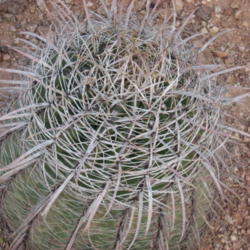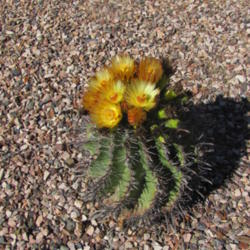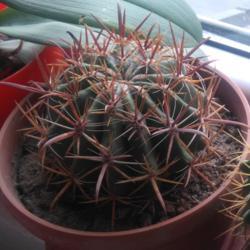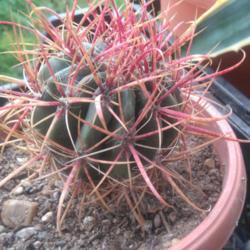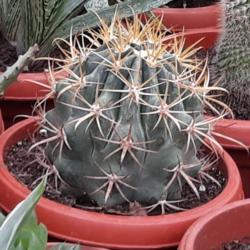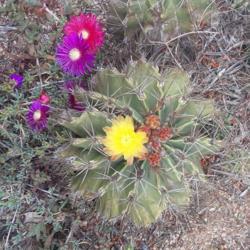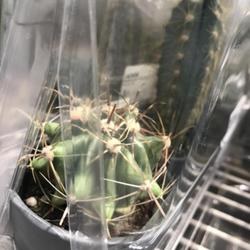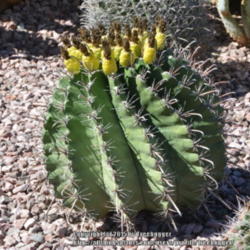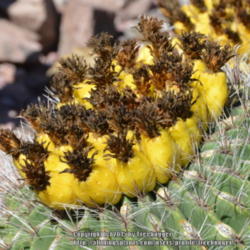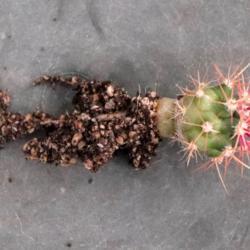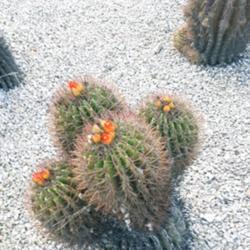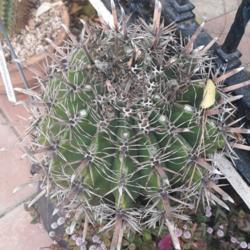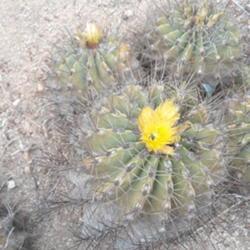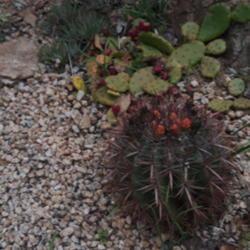Posted by
Baja_Costero (Baja California - Zone 11b) on May 24, 2019 3:28 PM concerning plant:
The couple dozen species of Ferocacti are called barrel cacti or biznagas (also spelled bisnagas). Ferocactus is similar to Echinocactus (also referred to as barrel cactus or biznaga), which can generally be differentiated by its densely wooly stem tips. Ferocactus plants are spiny and globose to cylindrical, occasionally clustering, especially so with one species (F. robustus). Bisexual flowers have scales, generally appear on young areoles in spring and summer, and are pollinated by bees; stamens are separated from the perianth by a ring of hairs.
Found in the southwestern US and central Mexico, and especially the peninsula of Baja California, which is home to several species. Divided into two sections: Ferocactus (dry fruits which dehisce at the base) and Bisnaga (juicy, fleshy, edible fruits which may or may not dehisce). DNA analysis has placed this genus close to Echinocactus but distant from the columnar cacti. Propagated from seed (some also from cuttings). Generally slow growing.
Among the most common plants in cultivation is one which may be self-fertile: F. latispinus, a green plant with flat, red, ribbed and hooked spines.
The former F. glaucescens (common in cultivation) and two other species were recently moved to the genus Bisnaga based on molecular (DNA) analysis. A few other species were also recently moved to the new genus Parrycactus for the same reason.
